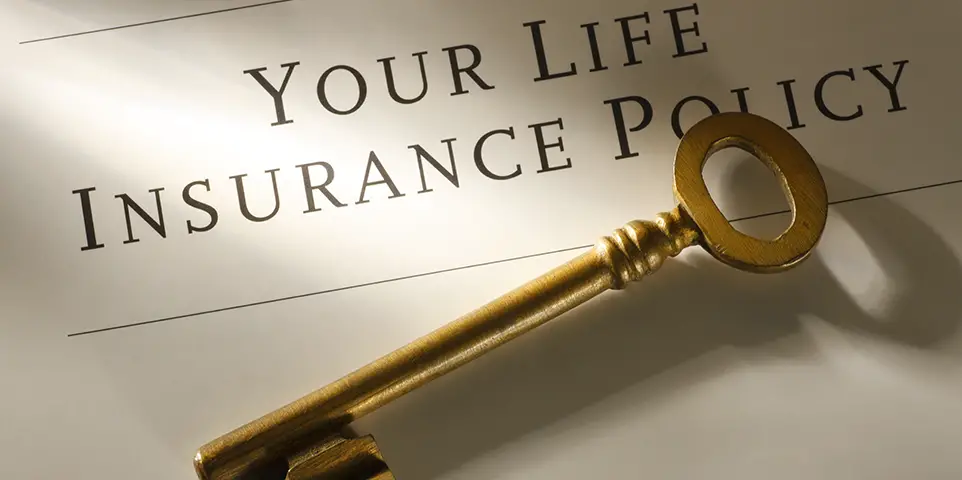Introduction
Hello everyone, my name is James and I’m an independent financial advisor. In this guide, I want to share my insights on comparing different life insurance policies and selecting the right one for your needs. Life insurance is one of the most important financial products, yet many people don’t fully understand the options available or how to evaluate what’s best for their situation. I hope this guide provides you with a helpful overview of the life insurance landscape and gives you the knowledge you need to feel confident about your decision.
Let’s start with the basics – what is life insurance and why do you need it? Life insurance is a financial safety net that provides money to loved ones or other beneficiaries if the insured person passes away. The main purposes of life insurance are to replace income that would be lost due to an untimely death, to cover expenses like funeral costs and debts, and to provide future financial security for dependents like a spouse or children through a lump sum payout. Most people need life insurance during their primary earning and child-rearing years to protect their families from financial hardship in the event of their untimely passing. As you get older and your children become self-sufficient, your life insurance needs may decrease. But even retirees can benefit from having some coverage in place, for example to replace a spouse’s income or fund inheritance for beneficiaries.
The amount of life insurance coverage you need depends on your specific financial situation, goals, and responsibilities. Here are some of the main factors to consider:
- Income replacement for dependents: How much annual income would need replacing if you passed away? Multiply this by the number of years your income is needed, usually between 10-20 years.
- Outstanding debts: Consider the amount owed on a mortgage, car loans, student loans, credit cards, etc.
- Future education expenses: Project college or other education costs for children or other dependents.
- Estate taxes: Evaluate whether your estate value exceeds federal/state estate tax thresholds. Life insurance can help beneficiaries afford taxes owed.
- Funeral/final expenses: Account for final medical bills, burial or cremation costs, estate settlement fees.
- Dependent care: Factor in long-term care needs of elderly parents or a disabled dependent.
- Charitable donations: Account for gifts intended for charities or organizations through life insurance proceeds.
Use online life insurance calculators or work with a financial professional to estimate the total coverage needed based on your particular circumstances. It’s usually best to get more coverage rather than too little when determining term or permanent life insurance protection. Over time, your needs may change and coverage amounts should be re-evaluated.
Now that we’ve covered why life insurance matters and how to estimate needs, let’s dig into the different types of policies available. There are two main categories of life insurance – term life and permanent (or cash value) life insurance.
Term Life Insurance
Term life is the most basic and affordable type of life insurance coverage. It provides life insurance protection for a pre-determined period of time, known as the “term”. Some key things to know about term life:
- Coverage amount: You select the face amount or death benefit, which will be paid out to beneficiaries if you pass during the term period.
- Term lengths: Most common terms are 10, 20 or 30 years. Shorter terms are cheaper but you may need to renew coverage.
- Level premiums: Your premiums (annual cost) are fixed during the initial term period. Premiums do not change each year as they do with some permanent policies.
- Renewable: You can often renew term policies for a new term at the end of the initial period, but premiums will increase based on your updated age and health.
- No cash value: Term policies don’t accumulate a savings or cash value component. The full premiums go only toward the pure insurance protection.
- Easy to understand: Term life keeps things simple by paying out the death benefit if the insured passes during the term coverage period.
- Inexpensive: Short-term policies especially offer outstanding protection at low monthly rates compared to permanent insurance.
- Good for temporary needs: Term policies work well when coverage is needed for a set period of time, like during child-rearing years or repaying a mortgage.
The most affordable way to get sufficient life insurance coverage is usually through 10- or 20-year level term life policies. Take a 30-year-old male non-smoker as an example – a $500,000, 20-year term life policy might cost around $30-35 per month. The same coverage amount through a whole or universal life permanent policy could cost 2-3 times as much in annual premiums.
Term life is simply the most budget-friendly option for many people’s temporary insurance needs. But after the initial coverage period ends, a new term policy may need to be purchased at premiums reflecting your older age. This lifetime term renewal feature can become expensive for long-term use. So let’s now discuss permanent or cash value life insurance options.
Permanent Life Insurance
With permanent life insurance, the premiums you pay build up a cash value or savings component within the policy over time. Some examples of permanent life policies are:
- Whole Life: Guarantees coverage for life at level premiums that remain consistent for as long as premiums are paid. Cash value grows tax-deferred.
- Universal Life: Provides lifetime coverage with flexible premium payments and death benefit. Cash value earns interest tax-deferred.
- -Variable Universal Life: Similar to universal but cash value growth is tied to investment options with market risk.
The main advantages of permanent life policies are:
- Lifetime coverage: As long as premiums are paid, the death benefit is guaranteed for life.
- Cash value growth: Over time, cash value grows to potentially provide income, loans, or be partially withdrawn tax-free.
- Tax benefits: Earnings within permanent policies grow tax-deferred and payouts like loans or distributions have favorable tax treatment.
- Potential legacy benefit: Remaining cash value may provide beneficiaries funds upon your passing.
However, permanent policies also have some drawbacks compared to term policies:
- Higher premiums: Upfront costs are significantly more expensive than comparable term coverage.
- Not always best value: Cash value growth does not always keep pace with the higher premiums paid.
- Not for short-term needs: Cash value takes time to accumulate, so not ideal if coverage is just needed temporarily.
Whole life insurance in particular works well for clients who want lifetime no-lapse protection at fixed premiums. However, it usually does not provide the best overall “value” for the money spent on premiums.
For most people with short- to medium-term coverage needs, a 10- or 20-year level term life policy is likely preferable to permanent insurance from a pure insurance protection cost standpoint. But permanent coverage may be appropriate for certain goals like long-term estate preservation or guaranteed lifetime coverage needs.
Now, let’s summarize the key differences between term and permanent life insurance:
Term Life Insurance
- Cheaper premiums
- Coverage for a pre-set term only (e.g. 20 or 30 years)
- No cash value build-up
- Must renew coverage at end of term
- Best for temporary situations
Permanent Life Insurance
- Higher premiums that create savings inside policy
- Lifetime coverage as long as premiums paid
- Cash value builds tax-deferred over time
- Often more expensive but offers lifetime protection
- May suit goals like estate planning or legacy needs
In summary, term life does the job of protecting dependents for a lower cost, while permanent insurance also focuses on the savings and legacy aspects. Each has its place depending on a person’s budget and needs. Knowing the differences is crucial to selecting the policy type that makes the most sense.

Now that we’ve covered the main types of policies available, let’s move on to the key factors to evaluate when comparing specific life insurance options:
Death Benefit Amount
As mentioned earlier, the amount of life insurance you need depends on your income, debts, dependents’ needs, and other financial obligations. Compare policies based on the death benefit amount needed to meet your coverage goals. Some policies offer the option to increase the benefit later if needs change.
Cost of Premiums
Make sure to compare “apples to apples” by requesting quotes with the same face amounts. Ask about any additional expense loads within the premium costs. Term life is usually the most affordable option. Consider if you can realistically afford the premium payments long-term.
Renewability
Make sure term policies allow you to renew coverage down the line without having to go through full medical underwriting again. This avoids disqualification due to health changes later in life. Permanent policies are renewable for life by design.
Cash Value Growth (for permanent policies)
Examine projected long-term cash value graphs to see how policies compare regarding returns on your premium investment over 10-20-30 years. Higher illustrated returns do not guarantee better long-run performance.
Investment Options
Variable universal life policies offer underlying investment choice within a selection of mutual funds. Consider costs, historical performance, and risks involved with the investment accounts offered versus other available investments.



Comments
Thank you for your articles. I find them very helpful. Could you help me with something?
Thank you for providing me with these article examples. May I ask you a question?